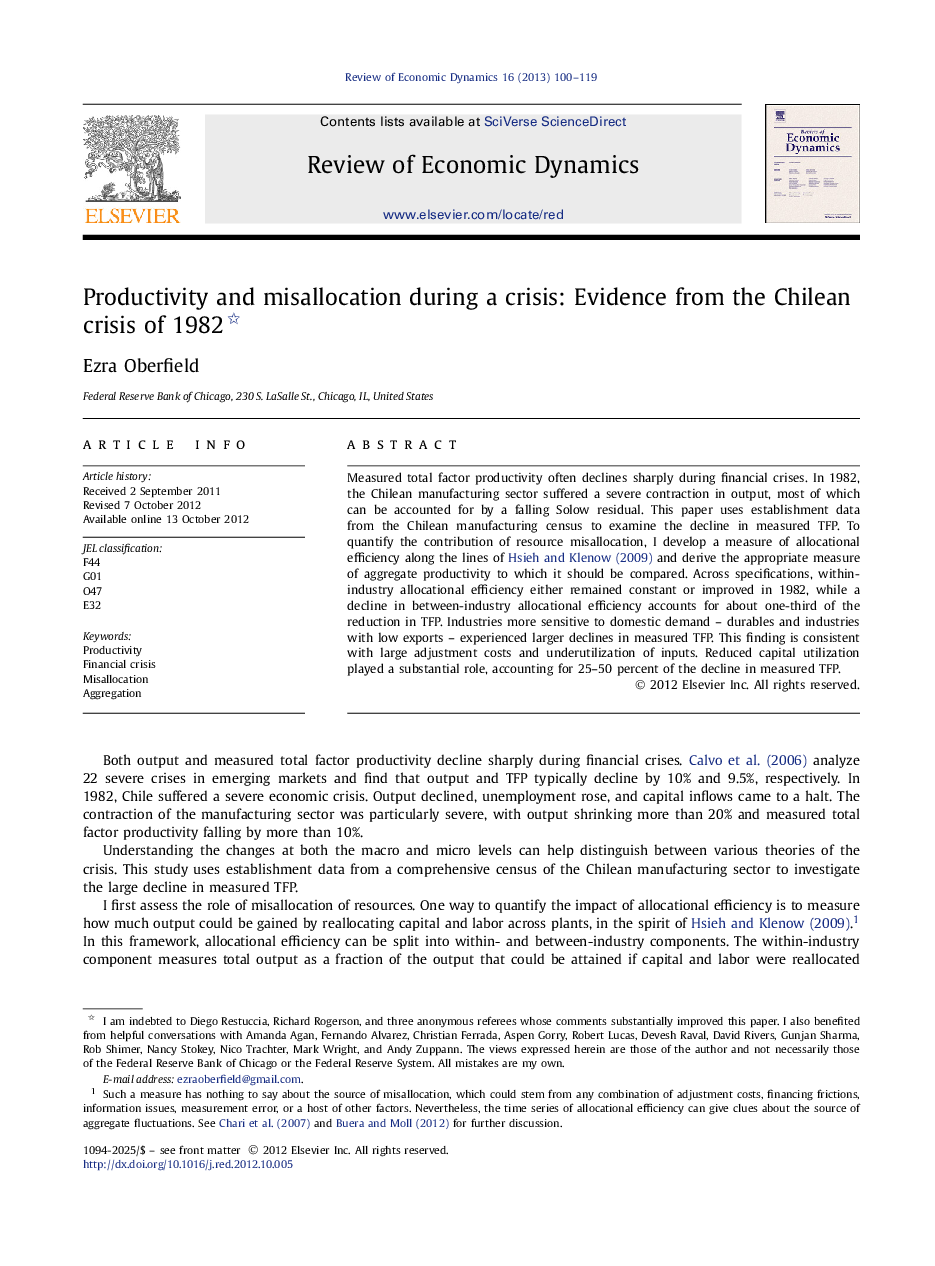| کد مقاله | کد نشریه | سال انتشار | مقاله انگلیسی | نسخه تمام متن |
|---|---|---|---|---|
| 986922 | 1480817 | 2013 | 20 صفحه PDF | دانلود رایگان |

Measured total factor productivity often declines sharply during financial crises. In 1982, the Chilean manufacturing sector suffered a severe contraction in output, most of which can be accounted for by a falling Solow residual. This paper uses establishment data from the Chilean manufacturing census to examine the decline in measured TFP. To quantify the contribution of resource misallocation, I develop a measure of allocational efficiency along the lines of Hsieh and Klenow (2009) and derive the appropriate measure of aggregate productivity to which it should be compared. Across specifications, within-industry allocational efficiency either remained constant or improved in 1982, while a decline in between-industry allocational efficiency accounts for about one-third of the reduction in TFP. Industries more sensitive to domestic demand – durables and industries with low exports – experienced larger declines in measured TFP. This finding is consistent with large adjustment costs and underutilization of inputs. Reduced capital utilization played a substantial role, accounting for 25–50 percent of the decline in measured TFP.
► I assess the role of misallocation during the Chilean crisis of 1982.
► I connect output lost to misallocation to a modified Solow residual.
► Changes in within-sector misallocation made a positive contribution to growth.
► Changes in between-sector misallocation made a negative contribution to growth.
Journal: Review of Economic Dynamics - Volume 16, Issue 1, January 2013, Pages 100–119